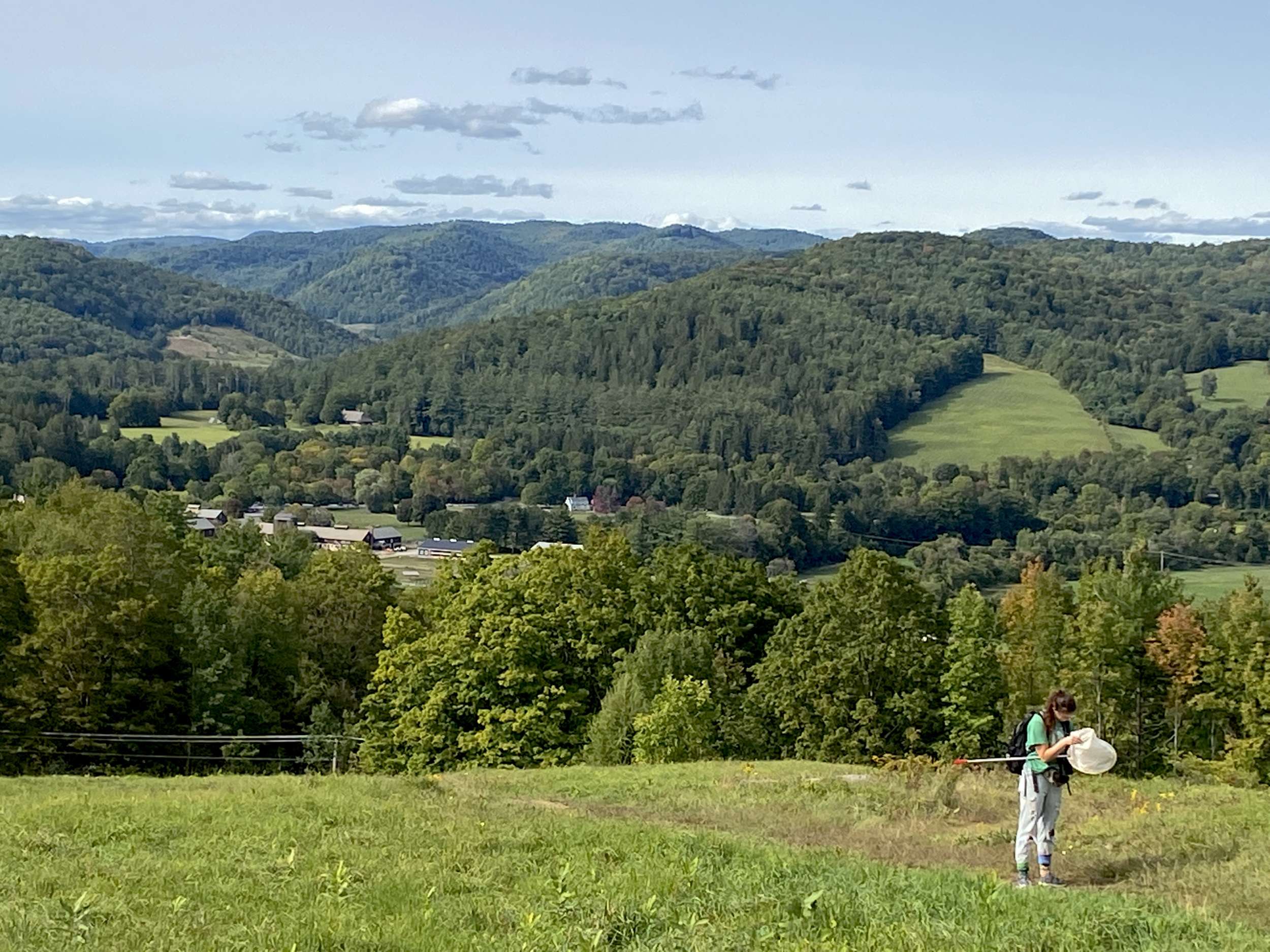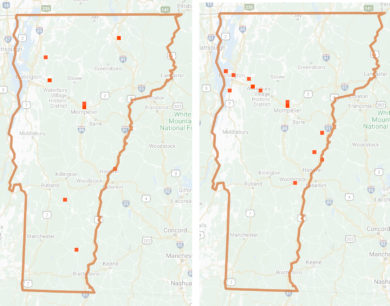Every lady beetle counts — from the common to the rare. Even if you lack experience with these insects, you can contribute to the Vermont Lady Beetle Atlas. Whether you help with full surveys or just find a few beetles while doing other outdoor activities, It's easy to report your sightings to the Vermont Lady Beetle Atlas on iNaturalist. Since at least the 1980s, native Lady Beetles that were once very common across the Northeast have become rare or have even gone missing.
Fourteen of Vermont’s 33 known native species have not been reported since the 1976 checklist was completed. Three of these species were designated as “species of greatest conservation need” in 2015 in New York: Two-spotted Lady Beetle (Adalia bipunctata), Nine-spotted Lady Beetle (Coccinella novemnotata), and Transverse Lady Beetle (C. transversoguttata). And the Nine-spotted Lady Beetle was recently declared “Endangered” in Canada.
An extensive USDA APHIS survey in 1993 failed to find any Nine-spotted Lady Beetles in 11 Northeastern states, including Vermont. Experts thought that both the Two-spotted and the Nine-spotted lady beetles were extinct in New York until citizen scientists rallied to help Cornell University’s Lost Ladybug Project search for them. In 2009 the Two-spotted was reported from western New York and in 2011 citizen scientists discovered several Nine-spotted lady beetles on Long Island.
The Vermont Lady Beetle Atlas was inspired by a desire to uncover similar answers about Vermont’s missing Lady Beetles. Through our research, we hope to pick up where the Lost Ladybug Project left off and amass a database of current Lady Beetle species in Vermont. Through this work, we want to discover whether missing Lady Beetle species still exist at low levels in some regions or if they truly are gone. Our long-term goal is to restore Vermont’s Lady Beetle diversity and counteract the proliferation of invasive Lady Beetles by reintroducing some of these lost species. Ultimately, by tackling unanswered questions about Vermont Lady Beetles and keeping our thumb on the pulse of Lady Beetle conservation, we hope to provide insight and support to those tackling environmental issues across the state.
How You Can Help
Combing Vermont’s forests, fields, and gardens for missing Lady Beetle species is an important mission and we definitely can’t do it alone! You can help us by photographing any Lady Beetle you come across and sharing it on iNaturalist. There's still time left this year to explore your yard, gardens, and meadows for Lady Beetles before autumn turns to winter!
For more information about our Vermont Lady Beetle Atlas, visit https://val.vtecostudies.org/projects/lady-beetle-atlas/







 Usá ArgentiNat con app iNaturalist
Usá ArgentiNat con app iNaturalist





